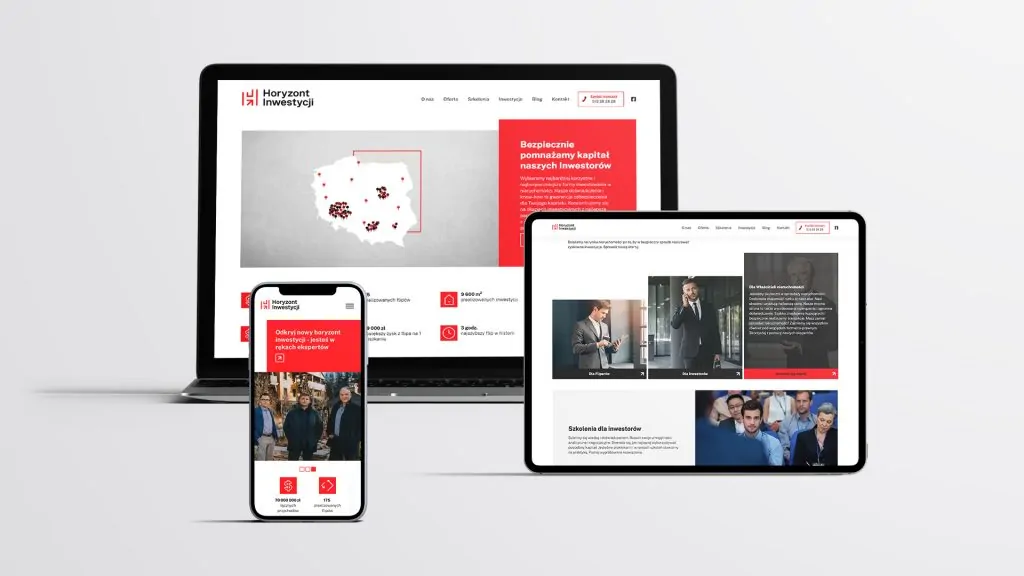Marketing communication channels are the pathways through which a brand communicates its message to its audience. They are bridges of sorts between the company and its customers, enabling a two-way flow of information. Unlike communication tools, which are specific methods or techniques used within a channel, channels themselves define the broader context of interaction. For example, a campaign that combines a social media message with personalised emails and interactive offline events creates a comprehensive brand image, engaging audiences on multiple levels. A company producing innovative electronic gadgets might use Instagram to showcase visually appealing products, LinkedIn to build B2B relationships and a company blog to share expert analysis of technology trends.
Types of marketing communication channels
Online channels
1. Website It is the focal point of a brand's online presence. A modern website is a business card for the company and an interactive platform to engage users. For example, a company offering interior design services can implement a virtual space creator on its website, allowing customers to experiment with different arrangements.
2. social media Facebook, Instagram or LinkedIn allow you to build a community around your brand. It is important to adapt the content to the specifics of each medium. A fashion brand can use Instagram to showcase its latest collections in the form of compelling photo shoots, while engaging its audience through interactive testimonials or competitions.
3. Email Marketing Despite the growing popularity of other forms of communication, email marketing remains one of the most effective channels. On average, e-mail marketing generates an ROI of 4400% - That's a return of PLN 440 for every PLN 10 spent! Personalisation of content and segmentation of the recipient base allow for precise targeting of the message. A company offering online courses can use e-mail marketing to send personalised course recommendations based on the user's previous asseverations.
4. Content marketing Company blogs, e-books or webinars are powerful tools for building brand authority. Providing valuable content allows you to position yourself as an expert in your field. A manufacturer of photographic equipment can run a blog with tips for photographers, organise webinars with established artists or provide e-books on advanced photographic techniques.

Offline channels
- Event marketing Organising industry events, workshops or conferences enables direct interaction with the audience. A technology company can organise a hackathon, engaging the developer community while promoting its solutions.
- Outdoor advertising Billboards, citylights or advertising on public transport allow you to reach a wide audience in urban spaces. Innovative approaches to outdoor advertising can include the use of augmented reality technology, creating interactive experiences for passers-by.
- Printed materials Brochures, catalogues or business cards, despite the growing dominance of digital media, still play an important role in branding. An eco-friendly cosmetics company can use catalogues printed on recycled paper, emphasising its commitment to the environment.
Do you care about effective marketing communication?
Check which communication channels we recommend to your company.
How to choose the right communication channels?
Wondering what marketing communication channels are and which ones will be suitable for your company? You want to know how wWhen selecting the optimal communication channels, you need to analyse your target group and the specifics of your industry. An important step in this process is to analysis of audience preferences, behaviour and needs. The use of analytical tools and market research enables the creation of precise marketing personas, which form the foundation of an effective communication strategy.
The next stage is an accurate assessment of the effectiveness of the communication channels currently in use. Analysis of indicators, such as conversion rates or user engagement levels, allows areas for optimisation to be identified and courses of action to be set.
An important element of planning is also investigating competitors' activitieswhich provides an opportunity to spot market niches and innovative ways to apply selected communication tools. This allows the company to better adapt its strategy and find unique ways to reach customers.
Clear definition of communication objectives such as increasing brand awareness or acquiring new customers, it is essential to choose the right channels. Platforms such as LinkedIn can be particularly effective for B2B companies, while consumer brands can succeed at Instagram if TikToku.
Finally assessment of available financial and human resources allows for realistic planning of activities. For small companies, this often means focusing on organic social media activities, while larger companies can invest in advanced campaigns that cover multiple channels simultaneously. Successful selection of a communication strategy is based on balancing all these factors and putting them into practice accordingly.
Effective use of communication channels
Effective management of communication channels is not just about choosing them - it is very important to skilfully exploit their synergies to create coherent and effective actions. It is also important to maintaining a consistent tone and style of communication across all channels. This helps to build a strong and recognisable brand image. At the same time personalisation of communicationtailored to the specifics of each channel, significantly increases its effectiveness. While a newsletter can offer detailed analysis of industry trends, shorter forms such as Twitter posts can focus on quick commentary on current events, capturing the attention of a diverse audience.
Combining online and offline activities is another important element of an effective communication strategy. Integrating digital and physical experiences creates a consistent customer path. An example of this is a clothing shop that, using beacon technology, sends personalised notifications to customers visiting the stationary shop based on their online shopping preferences, increasing engagement and loyalty.
Introduction of marketing automation tools optimises communication processes, increasing their efficiency and personalisation. Automatically sending emails in response to user actions or using chatbots on the website allows for faster and more tailored responses, significantly improving the quality of customer service.
However, the most important element of any communication strategy remains analysis and optimisation. Continuous monitoring of the effectiveness of individual channels makes it possible to adapt activities to changing market conditions. Analytical tools allow us to identify the most effective customer touchpoints, which in turn allows us to better allocate resources and maximise results.arketing helps us to select the right channel for our business and our audience.
Trends in communication channel management
- Personalisation at the micro level - Using advanced AI algorithms to create ultra-personalised experiences for each user. The streaming platform can generate unique movie recommendations based on viewing history, but also on the user's current mood or time of day.
- Immersive brand experience - Using VR and AR technology to create interactive brand experiences. A furniture company can offer an app that allows products to be virtually placed in a customer's home space.
- Voice search optimisation - Adapting content marketing strategy to the growing popularity of voice search. This requires a focus on natural language and conversational phrases in SEO content.
- Esethetic communication - Growing consumer awareness is forcing brands to be transparent and authentic in their communications. Companies are increasingly engaging on socially relevant topics, presenting their values and mission.
Mismanagement of communication channels
- Ignoring feedback - One-sided communication and failure to respond to customer feedback can lead to a loss of trust. Actively monitoring and responding to comments on social media is key to building relationships with customers.
- Excessive focus on one channel - Focusing all communication activities on a single platform limits the reach and effectiveness of the message. Diversifying channels allows you to reach a wider audience and minimises the risks associated with changes in the algorithms of individual platforms.
- Lack of consistency in the message - Inconsistent communication across channels can lead to a diluted brand image. It is important to develop a unified communication strategy adapted to the specifics of each channel.
- Neglecting analytics - A lack of systematic analysis of the effectiveness of communication activities prevents the optimisation of strategies. Regular audits and testing of different approaches allow the most effective tactics to be identified.
Successful management of marketing communication channels requires a holistic approach, combining an understanding of audience needs with skilful use of available technologies. However, success requires flexibility and a willingness to constantly adapt the strategy. Brands that are able to harmoniously integrate different communication channels, creating a consistent and engaging experience for customers, thus gain a competitive advantage and build lasting relationships with their audiences.

